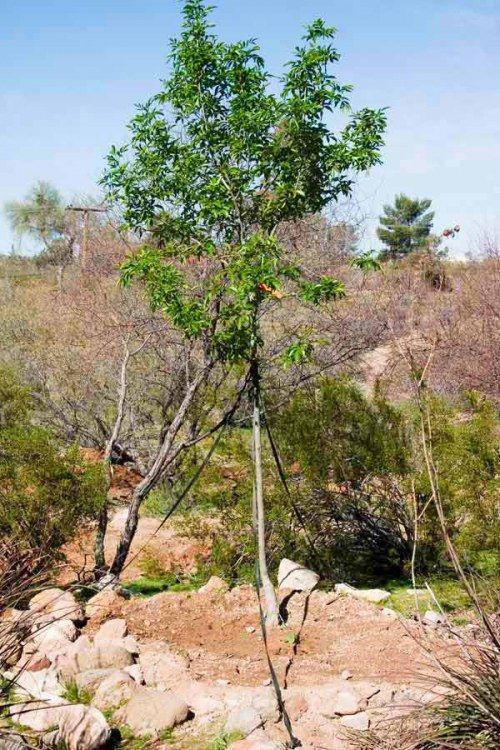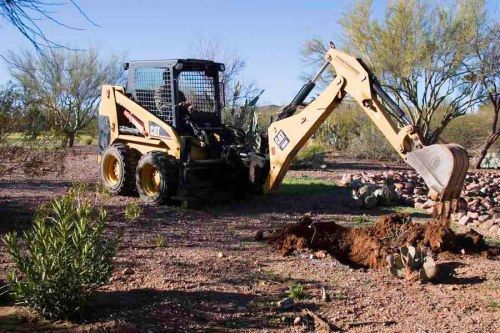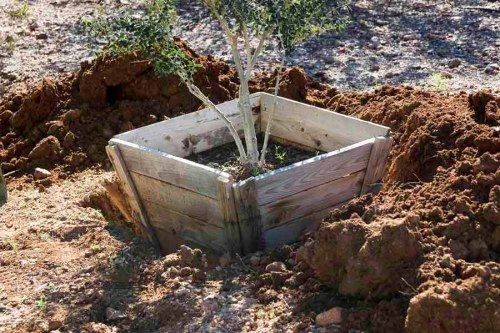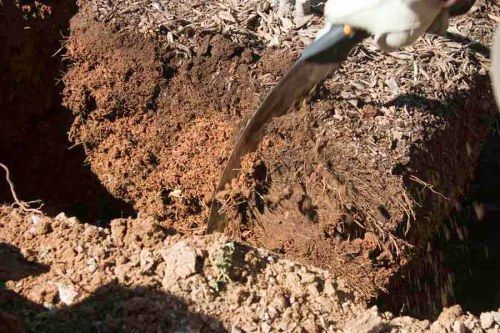
How to plant a tree
I’ve been working with a homeowner to trim a few trees and remove some trees during their new home construction/remodeling process. The house is done (it turned out fabulous!) and it’s time to plant some new trees. Some for shade on the west side of the house (“Death Valley”), some to screen less than desirable views, a screen for a power poles, etc. The homeowner is very knowledgeable about plants and their requirements. She came up with many of the species we will use, and relied on my recommendations for others.
The plan called for three species of ash trees (Fraxinus greggii – Littleleaf ash, Fraxinus velutina – Arizona Ash and Fraxinus udhei – Shamel Ash), two species of oak trees (Quercus suber – Cork Oak and Quercus virginiana), a Vitex agnus-castus, three Arizona Cypress – Cupressus arizonica, and five South American hybrid Mesquites (Prosopis sp). A nice selection! It is always nice to plant a variety in case a disease, insect or environmental conditions cause some trees to do poorly.
Because their growth often outpaces larger container sizes, and because of cost, we decided to use 24” box size trees. (Here in Arizona, field grown “ball & burlap” trees are usually not available – we typically have a selection of container grown trees.) Larger box sizes increase in price at the nursery in an exponential fashion. Also, it becomes difficult to handle larger sizes without using heavy equipment, which increases planting costs. Unless someone needs a very large tree immediately (I mean RIGHT NOW!), it is usually best to stick with smaller sizes.
The quality of the nursery stock is also a huge concern. I have preferred suppliers in Phoenix who know how to handle the plants as they grow. Each time a plant is moved from one container size to another (“bumped”) they need to ensure that the roots are manually straightened or pruned at the edge of the container. If this is not done, you can end up with a root system that looks like this:
Unloading a 24" box is at least a 2-person job
Back to the big tree planting project for the new homeowner… We had enough trees that I could get them delivered and didn’t have to go pick them up! Moving a 24″ box tree is usually pretty easy for two people. The weight depends on what exactly the nursery used to fill the box. Wet clay soil can be VERY heavy, dry organic mulch can be light. It is really nice to have a third person around for the heavy ones!
Sunrise among the big 60" box trees
As we were unloading, there was a problem – one of the trees was not very nice (the Vitex agnus-castus). I ended up rejecting it and driving to Phoenix to pick up a replacement at another nursery. It gave me an opportunity to take some pictures for you!
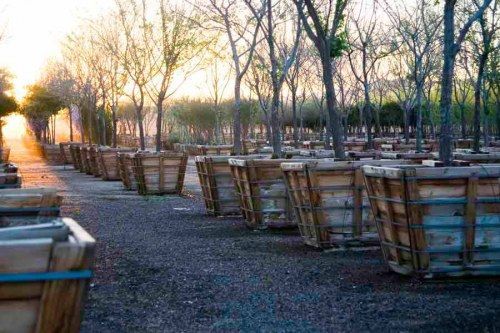
Skid steer with backhoe attachment speeds hole digging!
We had enough holes that we could get a contractor to dig them with a little backhoe. Hand digging 14 holes would not be very fun! The holes need to be at least 3-4” wider than the container. For 24” box trees that ends up being 30” to 32” square. The holes should be just as deep as the soil depth in the container – OR SHALLOWER! We usually go about 17” deep for a 24” box (the usual soil depth in a 24″ box). It is important to not dig the hole too deep – the soil can settle and you end up with a tree that is planted too deep! Two to three inches shallow is preferred to being too deep at all.
Looks too shallow! Better pull it out and dig a bit more...
We set the wood box in the hole and take off the metal straps which hold it together. Then we remove the box sides. Surprisingly, the box bottom is left on! It will soon decompose and doesn’t cause any problems for the tree at all.
After the box is off, we take an old pruning saw and cut off the outside 1” to 1-1/2” of the root ball. This should ensure that any circling roots will be removed. We can’t see inside the rest of the root ball, and have to trust that the nursery we dealt with did a good job!
Sawing the root ball to remove girding roots.
We use water as we backfill to make sure there are no air pockets around the root ball. We backfill to level, making sure we don’t add dirt around the trunk or on top of the root ball.
